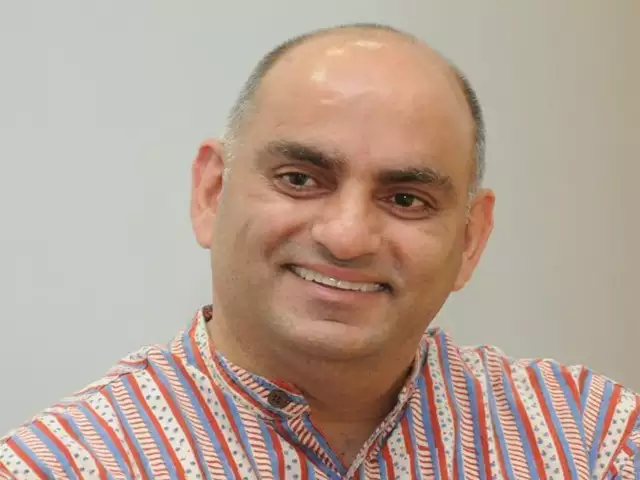Contents:


Secondary care services are usually based in a hospital or clinic, though some services may be community-based. They may include planned operations, specialist clinics such as cardiology or renal clinics, or rehabilitation services such as physiotherapy. Secondary healthcare includes a wide range of specialists such as psychiatrists, cardiologists, obstetricians, dermatologists, paediatricians and gynaecologists. In countries that operate under a mixed market health care system, some physicians limit their practice to secondary care by requiring patients to see a primary care provider first.
Provision of reconstruction surgery for patients suffering from cleft lip, cleft palate etc. At BirthRight Fertility by Rainbow Hospitals, Banjara Hills, we offer a very comprehensive & personalized range of evidence-based infertility treatments like IVF, ICSI, IUI, sperm donor treatments, ovulation induction, frozen embryo transfer and more. “Blockchain” is one of the most popular catchwords in the world of medical technology. It keeps a digital ledger of linked “blocks” of data that reflect how data is transferred, updated, or accessed on its peer-to-peer network. However, there are certain challenges and issues in the implementation of PHC such as the search for a standard implementation protocol and evaluation of healthcare interventions.
Careers in improving public health By Ranjan Baruah – E-Pao.net
Careers in improving public health By Ranjan Baruah.
Posted: Thu, 04 May 2023 01:30:22 GMT [source]
In the United States, primary care physicians have begun to deliver primary care outside of the managed care (insurance-billing) system through direct primary care which is a subset of the more familiar concierge medicine. Physicians in this model bill patients directly for services, either on a pre-paid monthly, quarterly, or annual basis, or bill for each service in the office. Examples of direct primary care practices include Foundation Health in Colorado and Qliance in Washington. Most health insurance policies require you to designate a primary care provider. In most cases, you can choose a family practice physician, internist, OB-GYN, geriatrician, or pediatrician for this role.
Doctors
Medicine, dentistry, pharmacy, midwifery, nursing, optometry, audiology, psychology, occupational therapy, physical therapy, athletic training, and other health professions all constitute health care. It includes work done in providing primary care, secondary care, and tertiary care, as well as in public health. Fortis Healthcare Limited – an IHH Healthcare Berhad Company – is a leading integrated healthcare services provider in India.
Sir H. N. Reliance Foundation Hospital is a 345 bedded Quaternary care Hospital located in South Mumbai. The hospital’s mission is “To deliver safe, affordable & quality healthcare by using international evidence -based practices through highly skilled healthcare professionals, well trained staff and advanced technology, to all sections of society”. It covers a complete spectrum of traditional and latest technological services for health-care of children.
The Indian hospital industry accounting for 80% of the total healthcare market is expected to touch US$ 132 billion by 2023.
To realise this task, as paradoxically envisioned by Illich, P4 needs support and further research to be globally disseminated in primary care. Health information technology is “the application of information processing involving both computer hardware and software that deals with the storage, retrieval, sharing, and use of health care information, data, and knowledge for communication and decision making.” In the United States, where around 18% of GDP is spent on health care, the Commonwealth Fund analysis of spend and quality shows a clear correlation between worse quality and higher spending. Community rehabilitation services can assist with mobility and independence after the loss of limbs or loss of function.
Dhirubhai Ambani Hospital, Lodhivali is a 82-bed state-of-the-art hospital that caters to an industrial and rural population in the Raigad district of Maharashtra. It provides free outpatient and subsidised inpatient treatment for the needy and poor patients as well as for senior citizens. It also provides free treatment to trauma victims from the economically weaker section of the society affected due to highway accidents.

Technology is one of the key elements set to transform the health delivery system. For instance, Wearable devices are making a direct impact on disease management and patient health. With the help of these devices, the healthcare provider can easily monitor their patient’s health outside of hospital/clinic settings.
Aside from financing mechanisms, an important question should always be how much to spend on health care. For the purposes of comparison, this is often expressed as the percentage of GDP spent on health care. In OECD countries for every extra $1000 spent on health care, life expectancy falls by 0.4 years.
What is secondary medical care?
Global concentrations of health care resources, as depicted by the number of physicians per 10,000 individuals, by country. Care levels discussed in ordinals (primary, secondary, etc.) describe the intensity of care and are commonly used for insurance purposes. Understanding the levels of care will help you navigate the medical system and receive the care you need. This included a dedicated COVID-19 care facility at the National Sports Club of India, Worli, Mumbai, managed by the Sir H.N. Reliance Foundation Hospital, and Gujarat’s first paediatric COVID-19 hospital at Jamnagar.
Neonatal intensive care at Sidra Medicine has 95.2% survival rate – The Peninsula
Neonatal intensive care at Sidra Medicine has 95.2% survival rate.
Posted: Sat, 29 Apr 2023 05:01:00 GMT [source]
Secondary care is when you see a specialist such as an oncologist or endocrinologist. Tertiary care refers to specialized care in a hospital setting such as dialysis or heart surgery. Static Medical Units provide diagnostic and consultation services focusing on chronic diseases like hypertension and diabetes. Professionally trained MBBS doctors, nurses and social workers cater to the primary medical care needs of the patients.
How many levels of care are in healthcare?
The low cost of medical services has resulted in a rise in the country’s medical tourism, attracting patients from across the world. Moreover, India has emerged as a hub for R&D activities for international players due to its relatively low cost of clinical research. Healthcare has become one of India’s largest sectors, both in terms of revenue and employment. Healthcare comprises hospitals, medical devices, clinical trials, outsourcing, telemedicine, medical tourism, health insurance and medical equipment. The Indian healthcare sector is growing at a brisk pace due to its strengthening coverage, services, and increasing expenditure by public as well private players. There are 3 different levels of health care systems which are primary, secondary, and tertiary.
- The World Health Organization’s emphasis on universal health coverage and its recent launch of the Rehabilitation 2030 Call for Action are encouraging steps towards the goal of strengthening rehabilitation within the health system and in particular within primary health care.
- The agreement will focus on joint initiatives and technology development in the health sector, with the aim of improving public health status of the population of both countries.
- In order to promote medical tourism in the country, the government of India is extending the e-medical visa facility to the citizens of 156 countries.
Secondary care includes hospital services, Child and Adolescent Mental Health services and child development centres. A referral from a primary care practitioner is required to access secondary care. While primary care focuses on general care for overall patient education and wellness, secondary care and tertiary care treat more severe conditions that require specialized knowledge and more intensive health monitoring.
It has been serving patients from different communities and countries at a fraction of international prices. Paediatric care unit consists of resource-focused medical experts providing quality health-care evaluations and treatments for better health and development of your child. Rainbow Children’s Hospital & BirthRight at Guindy, Chennai, which came into inception in 2018, is a NABH-accredited hospital. It is a 120-bedded women and child care hospital located at an easily accessible location in the heart of Chennai.
With over 23 years of experience, we have been successful in putting smiles on the faces of children and their parents. We have given the joy of motherhood at BirthRight and fulfilled the dream of parenthood for couples at BirthRight Fertility. To be a globally respected healthcare organisation known for Clinical Excellence and Distinctive Patient Care. In July 2022, the National Pharmaceutical Pricing Authority fixed the retail prices for 84 drug formulations, including those used for the treatment of diabetes, headache, and high blood pressure. The healthcare and pharmaceutical sector in India had M&A activity worth US$ 4.32 billion in the first half of 2022.

Overall, the primary care category describes patients that need generalized care within the hospital. However, it’s still important to make sure that these patients’ symptoms aren’t in line with a more serious disease process. You may have contracted a bacterial disease, broken a bone, or need to talk about a rash that you’ve noticed on your arm. To learn more about hospital care and these four levels of care in hospitals, keep reading. Each hospital carefully tracks and monitors each one of these patients, and one of the best ways to do that is by ranking patients via levels of care.
If the patient consults a specialist like a cardiologists or a dermatologist, who are usually consulted by a patient, they are known as Secondary Healthcare. While Tertiary Healthcare are specialized health care which are provided to patients on the reference of a Secondary Healthcare. The individuals may require advanced medical procedures such as major surgeries, transplants, replacements and long-term medical care management for diseases such as cancer, neurological disorders.
Care levels are named in ascending order lowest level of care to highest intensity . In partnership with Indian Head Injury Foundation, Reliance Foundation supports underprivileged victims of neuro trauma, targeting two wheeler riders, pillion riders and children along with bus and taxi drivers, pedestrians and cyclists in the age group of years. Through its health initiatives and services, Reliance Foundation has touched the lives of over 7.8 million people since inception. Understanding your scope of practice can help you get a better idea of the patients in your area. In turn, you’ll learn more about how to better care for patients in the long run.
These centers provide specialized consultative services for complex disease/conditions through specialized expertise and equipment . The tertiary healthcare provides solutions to medical conditions such as neurosurgery, coronary artery bypass surgery, plastic surgery, renal or hemodialysis, and many others. Examples of quaternary care centres include pediatric facilities , mental health facilities , and large academic centres . Secondary care services are provided by specialists and other health professionals who generally do not have first contact with patients. Secondary care is more specialized and focuses on helping patients who are struggling with more severe or complex health conditions requiring the support of a specialist.
The quaternary carecare delivery system is designed to provide a safe, accessible, cost-effective, and quality health services to patients. Patients that fall within the quaternary care category are those ‘once-in-a-lifetime’ patients that you may hear healthcare providers talking about. Secondary care is medical attention provided by a specialist facility upon referral by a primary care physician, and tertiary care is provided by a team of specialists in a major hospital . The cost of treatment at the various levels can be dramatically different, and generally, the cost of treatment for patients at the primary healthcare level is usually only a small fraction of that at the third level. Ideally, provision of health care at all levels of care and in all settings should be available to all patients; such health care is referred to as universal health care. The quantity and quality of many health care interventions are improved through the results of science, such as advanced through the medical model of health which focuses on the eradication of illness through diagnosis and effective treatment.
In November 2021, the Government of India, the Government of Meghalaya and the World Bank signed a US$ 40-million health project for the state of Meghalaya. Project will improve the quality of health services and strengthen the state’s capacity to handle future health emergencies, including the COVID-19 pandemic. The Indian government is planning to introduce a credit incentive programme worth Rs. 500 billion (US$ 6.8 billion) to boost the country’s healthcare infrastructure. Individuals undergoing P1 and P2 might be subjected to overdiagnosis and overtreatment . Overdiagnosis is ‘the diagnosis of a condition that would have remained indolent in the patient’s lifetime if left undetected’.5 Thus, patients end up dying from competing diseases and not gaining in longevity. Health care extends beyond the delivery of services to patients, encompassing many related sectors, and is set within a bigger picture of financing and governance structures.
- It provides free outpatient and subsidised inpatient treatment for the needy and poor patients as well as for senior citizens.
- Understanding your scope of practice can help you get a better idea of the patients in your area.
- The mission to distribute free fuel for ambulances across 21 states was taken up between May and September 2021 during the second COVID wave, providing a much needed boost to emergency response services.
These services are complemented by quaternary care at the Reliance Foundation Hospital and Research Centre. Patients who are getting common surgical procedures like coronary artery bypass surgeries fall in the tertiary level. Once a patient becomes admitted to hospital care, they are at the tertiary level no matter what the reasons for admission are. One of the biggest problems that occur at the secondary level of care is the inability to coordinate care. Unfortunately, having multiple physicians can make coordinating care more difficult because there is more input to filter through. Giving great care to these patients can lead to better health outcomes and a decrease in hospitalization rates.
Fortis offers a full spectrum of integrated healthcare services ranging from clinics to quaternary care facilities and a wide range of ancillary services. As such Consultants in tertiary care centres have access to more specialised equipment and expertise. Fully-equipped Mobile Medical Units with state-of-the-art technology, including cloud-based software are incorporated to store patient information and plan programs for the communities. MMUs provide free of cost necessary healthcare services at the doorstep of beneficiaries through periodic visits. They further address beneficiary requirements with proper consultations and adequate medical care facilities MMUs operating across plant locations were also instrumental in providing vital care during the second wave of the COVID-19 pandemic in rural India. Motherhood hospitals is a chain of tertiary care hospitals dedicated to health issues in women and children.
